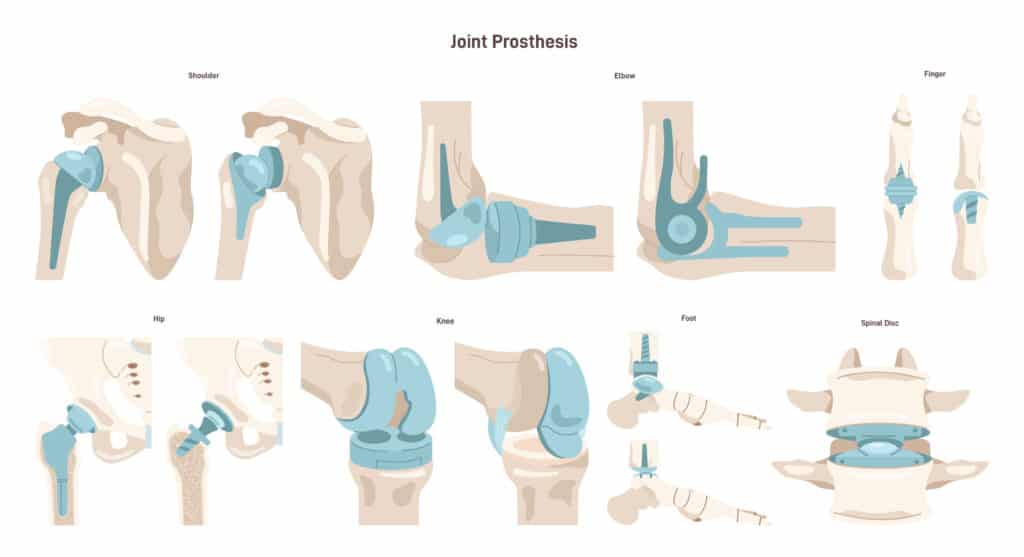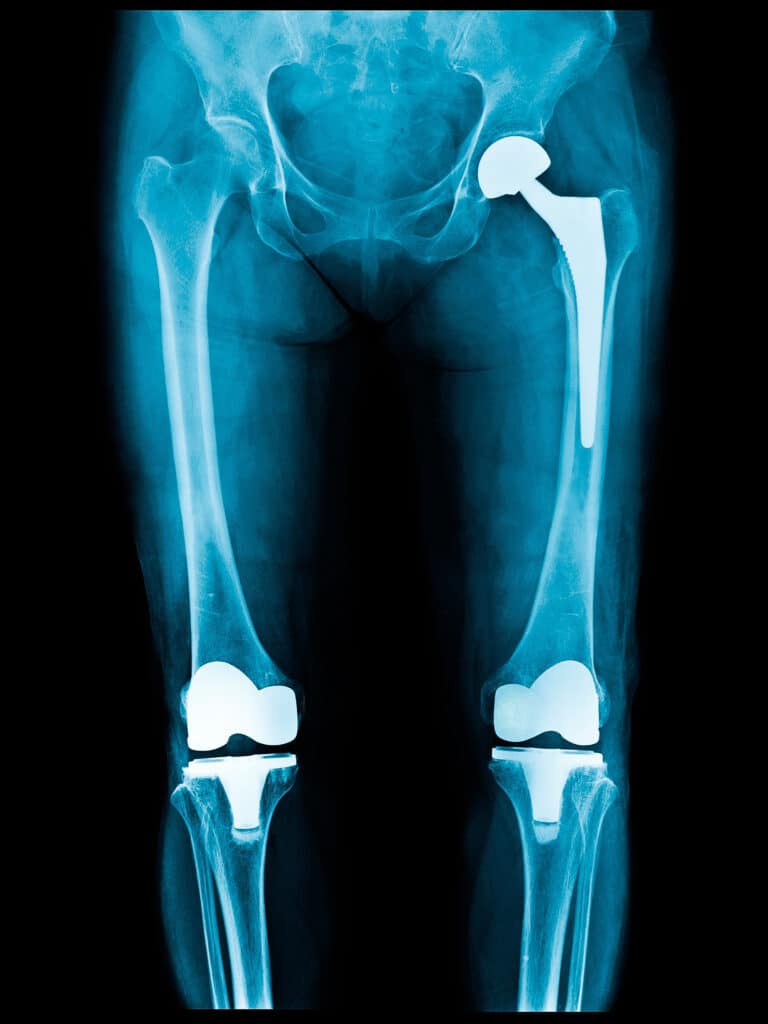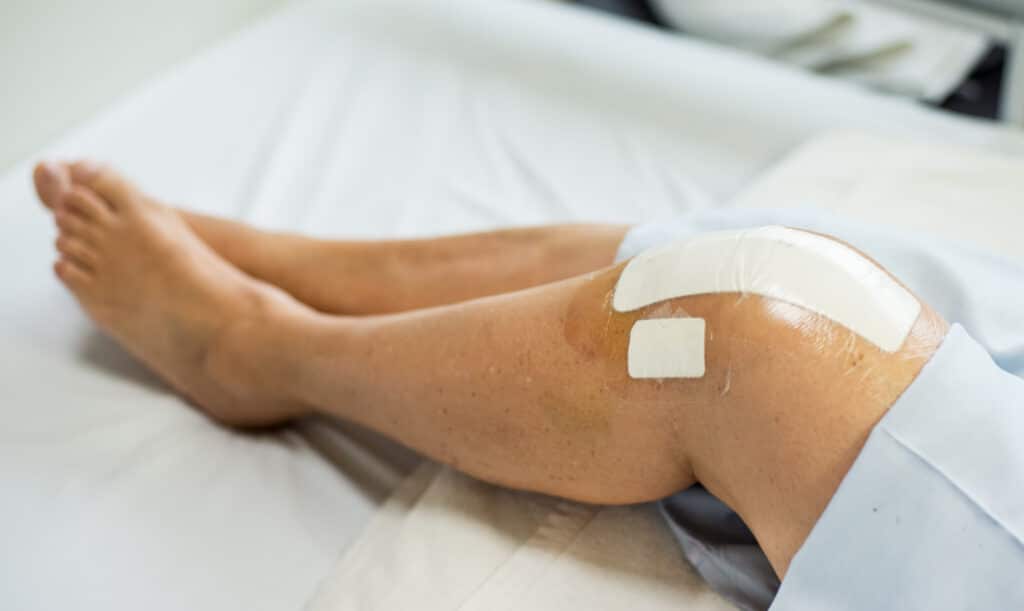Total Joint Replacement
Total joint replacement surgery, medically known as arthroplasty, replaces a damaged joint with an artificial one to restore proper function and mobility. Most often, your orthopedic surgeon replaces the entire joint. But in a small number of cases, replacing only the damaged part may be more appropriate. The most commonly replaced joints are the knees, hips, and shoulders, but surgeons can also replace elbows, wrists, ankles, and toes.
Total Joint Replacement Surgery

A joint is where the ends of two or more bones meet. The ends of these bones are covered in a cushioning substance called articular cartilage. Excess damage to this cartilage or certain other conditions that cause excess pain or poor joint function can necessitate arthroplasty.
You may be a good candidate for total joint replacement if you have:
- Joint pain that does not sufficiently respond to conservative non-surgical treatments like rest, physical therapy, medications and injections, or support through bracing or assistive devices
- Stiffness and reduced range of motion in a joint that make it difficult or impossible to perform your daily routine or engage in the activities you enjoy
- Joint swelling and inflammation that is not improving
Specific conditions that may warrant arthroplasty include:
- Arthritis, including osteoarthritis, rheumatoid arthritis, and post-traumatic arthritis
- Certain types of fractures or fractures that are not healing properly
- Joint abnormalities like hip dysplasia
- Insufficient blood supply to the bones of the joint (avascular necrosis)
- Benign or malignant tumors
Total Knee Replacement and Total Hip Replacement
Two of the most frequent joint replacement surgeries are total knee replacement and total hip replacement, but elbow replacement is also somewhat common. Choosing to undergo a total joint replacement is a big decision, but if your daily life is interrupted by pain and stiffness and you cannot move as desired, this type of surgery may be a great option. As with any treatment, the goal is to return you to the activities you most enjoy and improve your overall health and quality of life.

Preparing for Joint Replacement Surgery
Recovery time following total joint replacement surgery varies depending on the type of procedure as well as your age, lifestyle, and overall health. To help improve the outcome of your surgery and decrease healing time, it’s important to properly prepare for your procedure.
Preparing for total joint replacement surgery typically includes performing physical therapy strengthening exercises. Eating a healthy diet to decrease inflammation and lose weight, if necessary, is also ideal.
You will get blood drawn before your procedure as part of your overall health evaluation. Your orthopedic surgeon may also request an electrocardiogram, X-rays, an MRI, or a CT scan. You may need to put certain medications on hold before total joint replacement surgery, including blood thinners.
What to Expect During Surgery
Most total joint replacement surgeries last a few hours and take place in an outpatient clinic or at a hospital. You’ll need to stop eating and drinking prior to your surgery as you will be under anesthesia during the operation.
During the operation, your orthopedic surgeon will replace the damaged joint with a metal, ceramic, or plastic prosthetic. The surgical technique they use depends on the joint needing replacement. Some joint replacements can be performed with minimally invasive techniques, meaning fewer incisions and typically a quicker recovery time. (See our posts on hip replacement recovery time and what to expect 1 year after total knee replacement for more information.)
Post-surgery, any incisions made will be closed using stitches, staples, or surgical glue. Your surgeon will dress the area using a sterile bandage and may give you a brace or sling for support.
You might be required to stay in the surgical center for only a few hours or up to a couple of days for observation and help with pain management. When it’s time to be discharged, you’ll need the help of a friend or family member to drive you home. To help your recovery, you may want some additional help moving around, bathing, and doing daily tasks.
Total Joint Replacement Rehabilitation
To manage your pain and improve joint replacement recovery time, it’s important to:

- Rest as much as possible; ask for help with chores, and make sure you take time to recover
- Ice the area for 20 to 30 minutes at a time using a wrapped ice pack
- Elevate the joint according to your surgeon’s instructions
- Keep the area clean and covered to avoid infection; follow instructions regarding when you can remove the dressing and when it’s okay to bathe as normal
- Take medications as directed, including nonsteroidal anti-inflammatory drugs (NSAIDs) like ibuprofen and naproxen and anything prescribed to reduce the risk of blood clots or swelling; you may also need antibiotics after a total joint replacement
- Perform physical therapy (PT) to strengthen the muscles around the replaced joint for better support, flexibility, and range of motion
To improve total joint replacement recovery and get back to living as you like, follow all instructions provided by your orthopedic surgeon. Recovery time depends on your age, activity level, lifestyle, which joint was replaced, whether the replacement was partial or full, and any underlying health conditions.
Joint Replacement Complications
As with any surgery, total joint replacement surgery comes with the risk of complications. Other than pain, infection is the most common (though still rare) complication. Other possible complications include blood clots and injury to surrounding nerves. Some people also experience joint stiffness or instability (like knee instability or shoulder instability) and difficulty with the joint staying in place.
If you have diabetes or an autoimmune disease, you have a higher risk of complications and may have more difficulty recovering from total joint replacement surgery.
As technology improves, new joints are lasting longer than they used to. Today, most new joints last 10 to 15 years. Individual results will vary, so talk to your surgeon about how to best care for your new joint.
If you have chronic joint pain, would like to talk with an orthopedic surgeon about managing your symptoms, or have questions about total joint replacement, please contact us or comment below.
Leave a Reply